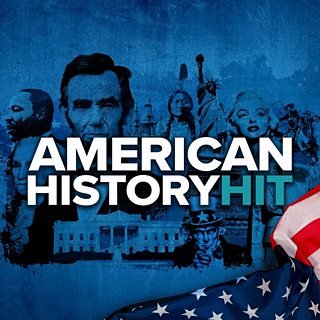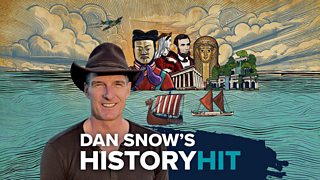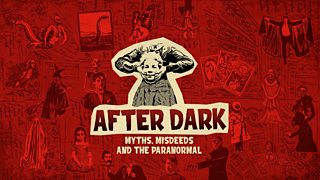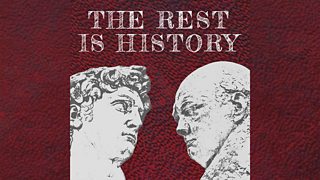The Vikings didn’t wear horns - and seven other things we learned
Five centuries before Christopher Columbus set foot in America in 1492, the Vikings arrived in present day Canada. In this episode of American History Hit, historian and author Martyn Whittock explains how the Norse sailed into the lands and imaginations of America.
Here are just some of the things we learned from the podcast, now on ÃÛÑ¿´«Ã½ Sounds.
1. The meaning of “Viking” has changed over time.
“Today, ‘Viking’ has become the label of choice that describes any Scandinavians in the so-called Viking Age from the late eighth century to about 1100 or so,” says Whittock. But at the time, “Viking” was more about what you did than who you were. “If you went ‘viking’, you went out on a spot of muscular free enterprise – although those people who were on the receiving end tended to describe it in rather more negative terms,” he says.
2. Vikings turned up all over the world.
In the 8th century, there was an explosion of Viking raiding, accompanied also with trading and exploration, that affected most of the communities of Western Europe. This included the British Isles, the Eastern Baltic, and where we now call Russia and Ukraine. They also raided North Africa, and Italy. “We hear of Vikings turning up in Baghdad on camels,” says Whittock. “They really did.”
3. After a generation or so of raiding, they became settlers.
Around 850, the Vikings became land takers. “They were great at sniffing out weakness and political division, and then exploiting it,” Whittock says. “And that's when we start to see eastern England fall under their control, and parts of Scotland, Ireland (which was a patchwork of different princedoms at the time), and the western isles.”
4. There were no horns on their helmets.
Unfortunately, there is no archaeological evidence for the warriors wearing their iconic horns or wings. “We do have carvings from Scandinavia showing beings with winged or horned helmets, but they were almost certainly deities,” Whittock says.
5. The Vikings’ travels were recorded in sagas.
These stories, written by Christians mostly from Iceland, were a blend of history and mythology. The two main sources on the Norse exploration of North America were the Saga of the Greenlanders and the Erik the Red saga. “They were written in Iceland, in one case at the end of the 13th century, and in the middle of the 14th century,” Whittock explains. “These two sagas read remarkably realistically, because while [they are part mythology], most of it seems pretty identifiable.”
6. The Minnesota Vikings are probably not named correctly.
Sadly for fans of the American football team, Whittock is not convinced that Minnesota was a hotspot for Viking settlers. This was most likely a myth that began around the second half of the 19 century, he says. In Minnesota, there was a desire among Scandinavian immigrants to feel a connection with the land that predated their own taking of the land in the 1870s. “It's not surprising that in 1898 a man called Ohman who's doing a bit of clearance on his land, finds a runestone, and the runestone says Vikings were here at the end of the 14th century. Suddenly, other runestones start to appear as well.” Whittock believes these runestones were most likely hoaxes.
7. Evidence of Viking presence in America has been found in Newfoundland.
For example, pieces of wood that don't grow on Newfoundland land that must have come from the North American continent. “We’ve also found butternuts, or white walnuts, which don't grow further north than New Brunswick or Maine, which means the Vikings must have travelled into what we now call southeastern Canada or perhaps northern New England. Quite extraordinary!”
To find out more about the Vikings, and their voyage to North America, listen to American History Hit now!
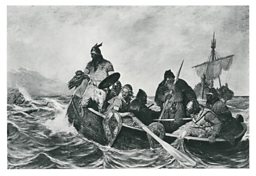
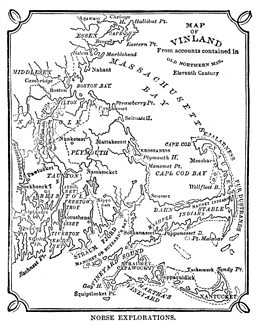
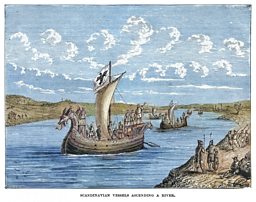
More from the ÃÛÑ¿´«Ã½!
-
![]()
Dan Snow's History Hit
Historian Dan Snow investigates the 'how' and 'why' of history's defining moments.
-
![]()
After Dark: Myths, Misdeeds & the Paranormal
The podcast that unpicks history’s spookiest, strangest, and most sinister stories.
-
![]()
The Rest Is History
Tom Holland and Dominic Sandbrook are interrogating the past to de-tangle the present.
-
![]()
Cautionary Tales
We tell kids fairy tales for lessons, but Cautionary Tales are for adults – and they’re true.
